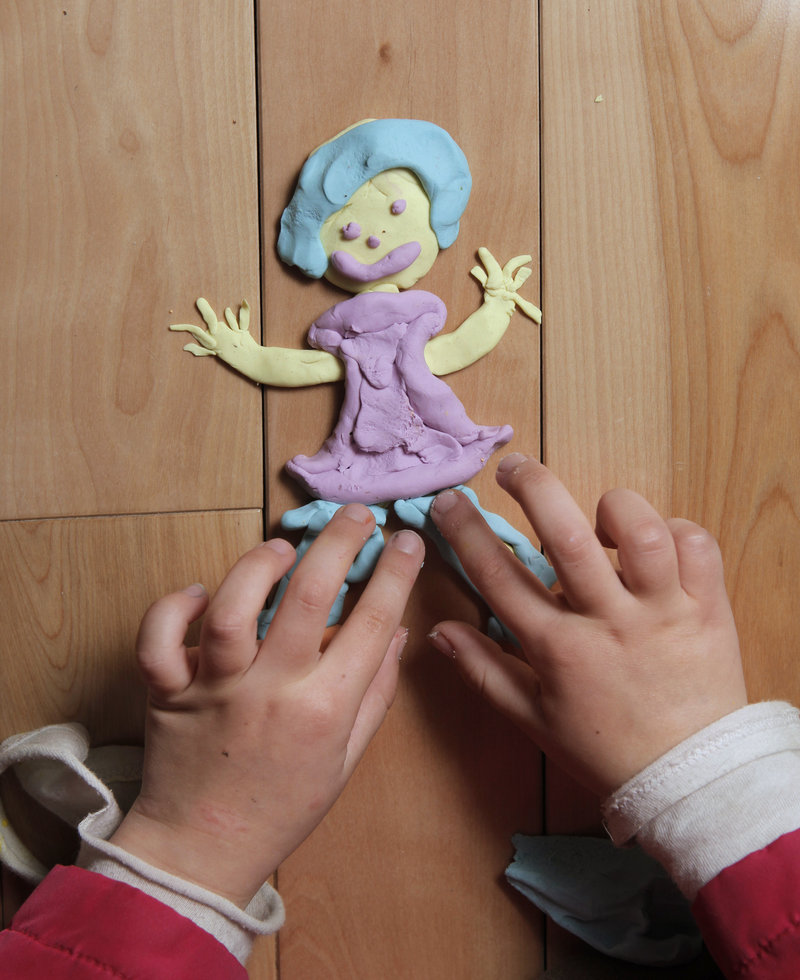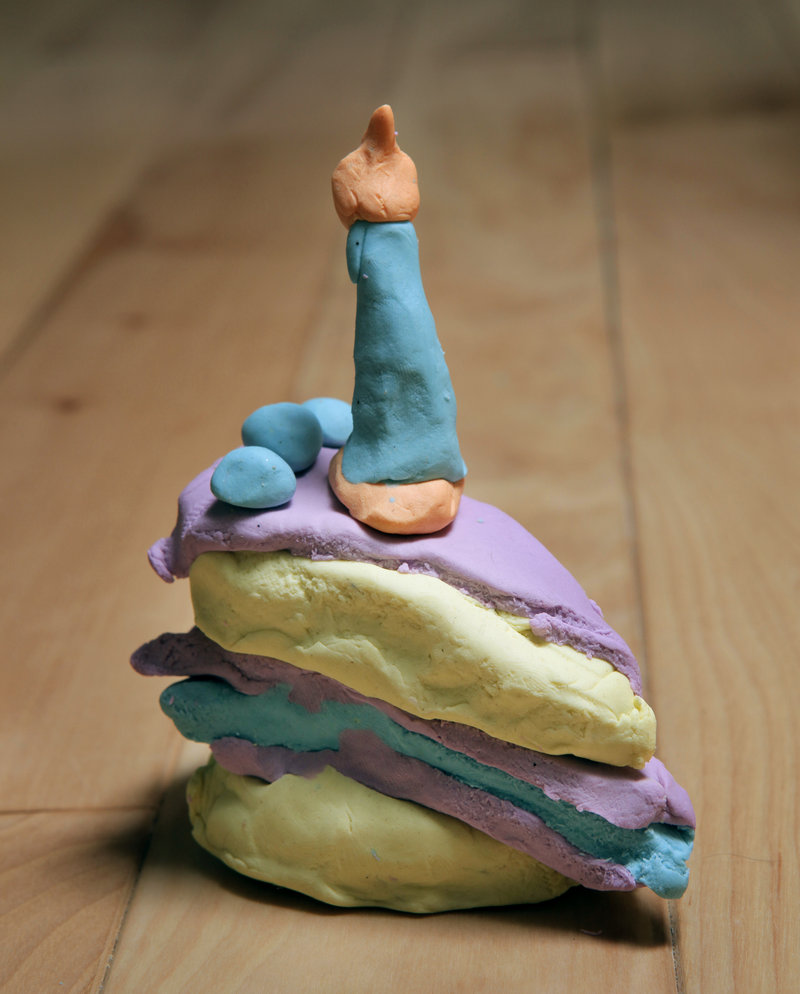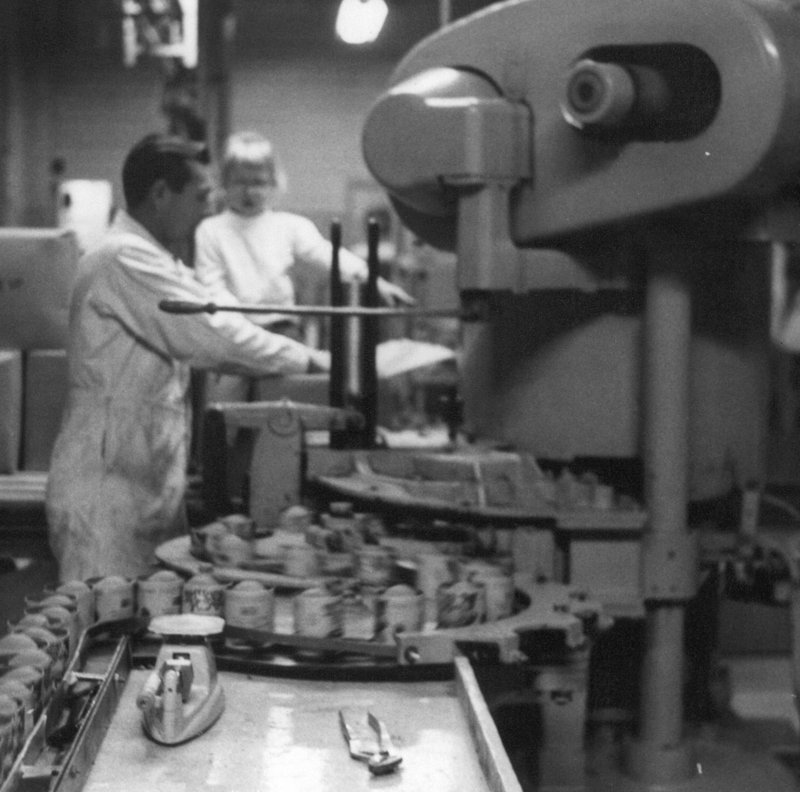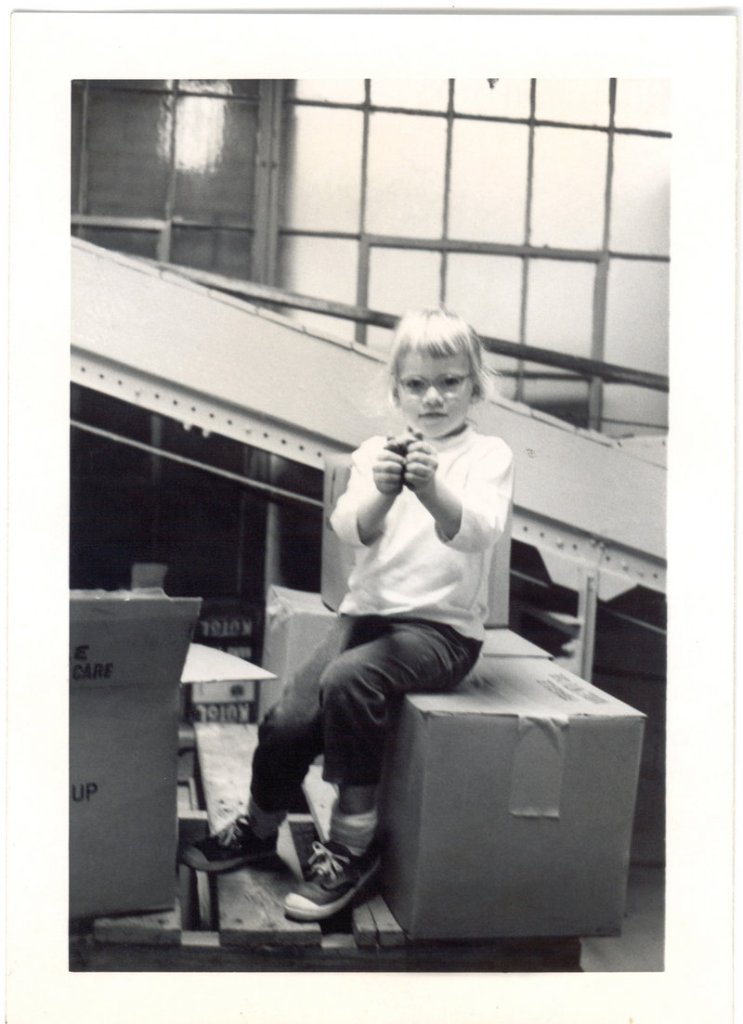When she catches a whiff of Play-Doh, Mary Noyes of Freeport is transported back to the 1960s. Many of us find old memories triggered by the malleable toy’s evocative aroma, but Noyes maintains a special connection to the iconic plaything.
In 1956, three years before she was born, Noyes’ father, Joseph McVicker, turned a languishing family business that sold wallpaper cleaner into a toy company that would soon be a household name. With the decline of coal-burning stoves, housewives had less and less use for the dough-like cleaner that could be rolled against wallpaper to remove built-up soot. But prompted by a relative who taught nursery school and had used the white wallpaper cleaner to create crafts with her students, McVicker saw an opportunity to reach a new market. Soon, the factory was converted to making Play-Doh.
“The smell of Play-Doh can still take me back to the factory,” Noyes said.
The manufacturing facility, which, according to Noyes, was appropriately called the Fun Factory, was located in Cincinnati.
“The first memory for me is roller-skating in the factory and watching the Play-Doh come down the trays into the cans,” Noyes said. “The Play-Doh came down like a slide, like a cement truck pours.”
Later, McVicker hired Tien Liu, a chemist, who made sure the substance was stable and wouldn’t dry out should a child fail to replace the cap.
When Play-Doh debuted, it came in one color — white — and was sold in 1.5-pound cans. In 1957, color came to Play-Doh with red, yellow and blue versions of the modeling compound.
“We had only three colors when I was a little girl,” Noyes said. “To the best of my knowledge, not only are the ingredients the same, the only change they’ve made is to add colors.”
In 1965, McVicker and his uncle sold the company to General Mills.
That same year, McVicker was mentioned in a Time magazine cover story titled “Millionaires Under 40.” The story noted, “recently he sold out his business and started a second career by entering the Harvard Divinity School.”
After a series of mergers, the company was purchased in 1991 by current owner Hasbro.
Juliet McVicker, Noyes’ older sister who lives in Shelburne, Vt., remembers that her dad had an unconventional business style.
“He had a whole different way of doing business,” Juliet said. “He was intuitive. He really treated his employees as partners.”
Juliet also recollects that her dad had a wonderful sense of humor.
“I remember it was Christmas and my dad, who was very charming, gave my mother a big canister of Play-Doh,” Juliet said.
Her mother opened the can, all the while asking if the pinkish-red Play-Doh was a new color and no doubt wondering why he chose this particular gift.
“He said, ‘Take it all the way out,’ ” Juliet recalled. “In the bottom was the most beautiful diamond ring with Play-Doh all over it.”
Today, more than 50 years after its launch, the classic toy remains near and dear to the two sisters’ hearts. Noyes’ daughters, Alexandra, 20, and Mary, 14, both enjoyed playing with Play-Doh when they were younger, and she continues to be filled with pride and nostalgia whenever she sees kids using Play-Doh.
“I think it remains popular because of its simplicity in the world today where the electronic environment is so invasive,” Noyes said. “Going back to the basics is part of its draw.”
Staff Writer Avery Yale Kamila can be contacted at 791-6297 or at:
akamila@pressherald.com
Copy the Story Link
Send questions/comments to the editors.







Success. Please wait for the page to reload. If the page does not reload within 5 seconds, please refresh the page.
Enter your email and password to access comments.
Hi, to comment on stories you must . This profile is in addition to your subscription and website login.
Already have a commenting profile? .
Invalid username/password.
Please check your email to confirm and complete your registration.
Only subscribers are eligible to post comments. Please subscribe or login first for digital access. Here’s why.
Use the form below to reset your password. When you've submitted your account email, we will send an email with a reset code.